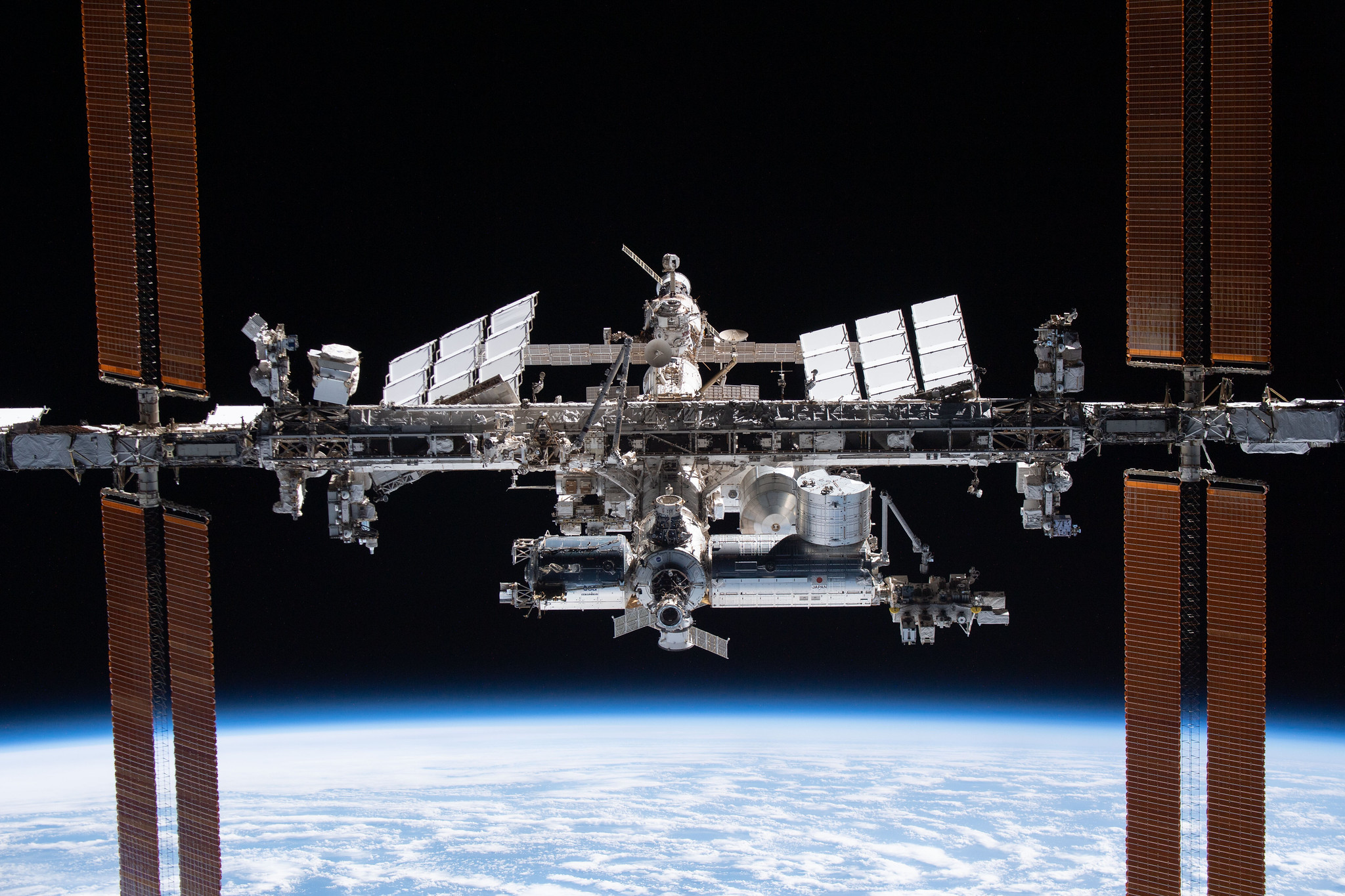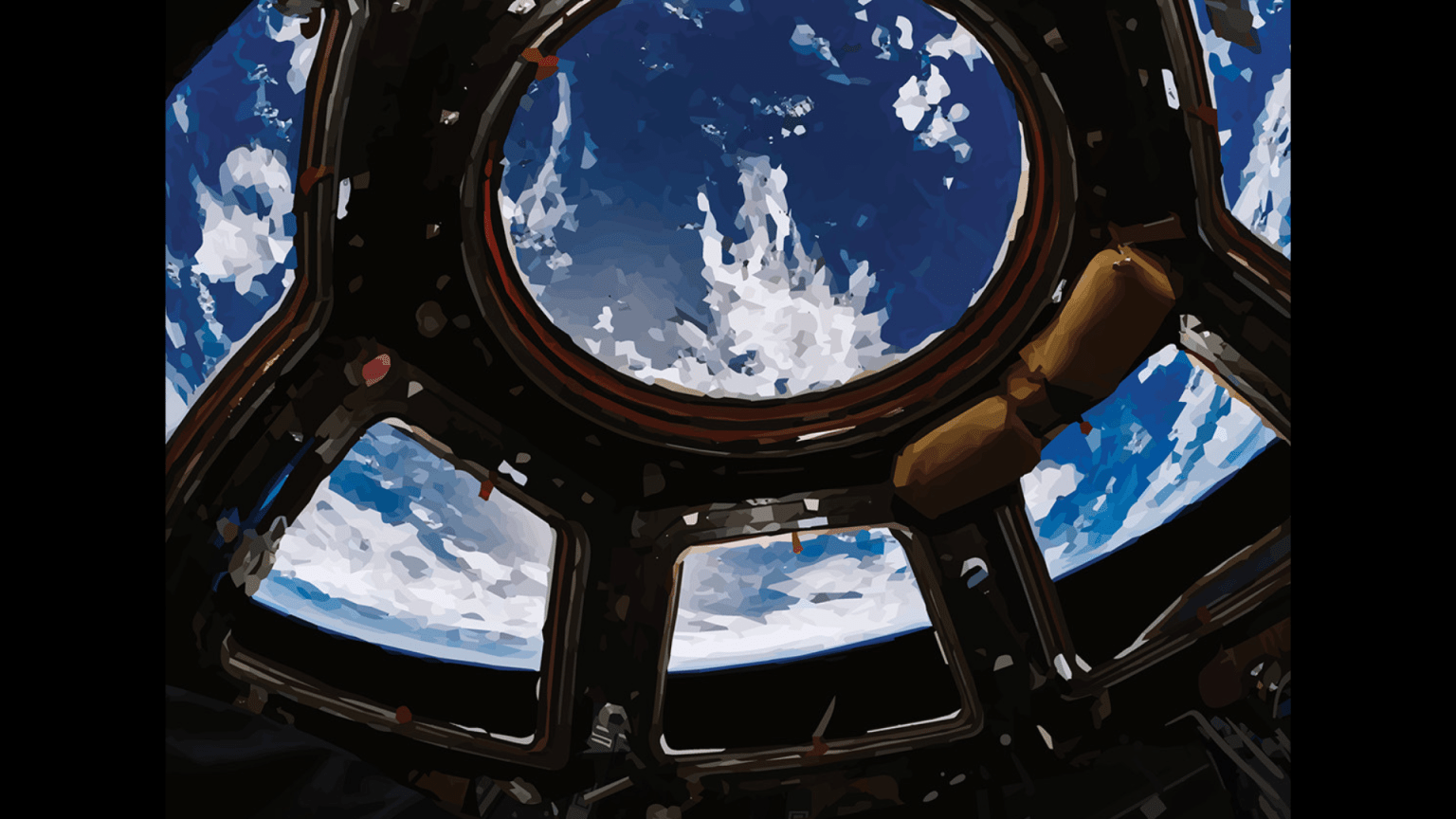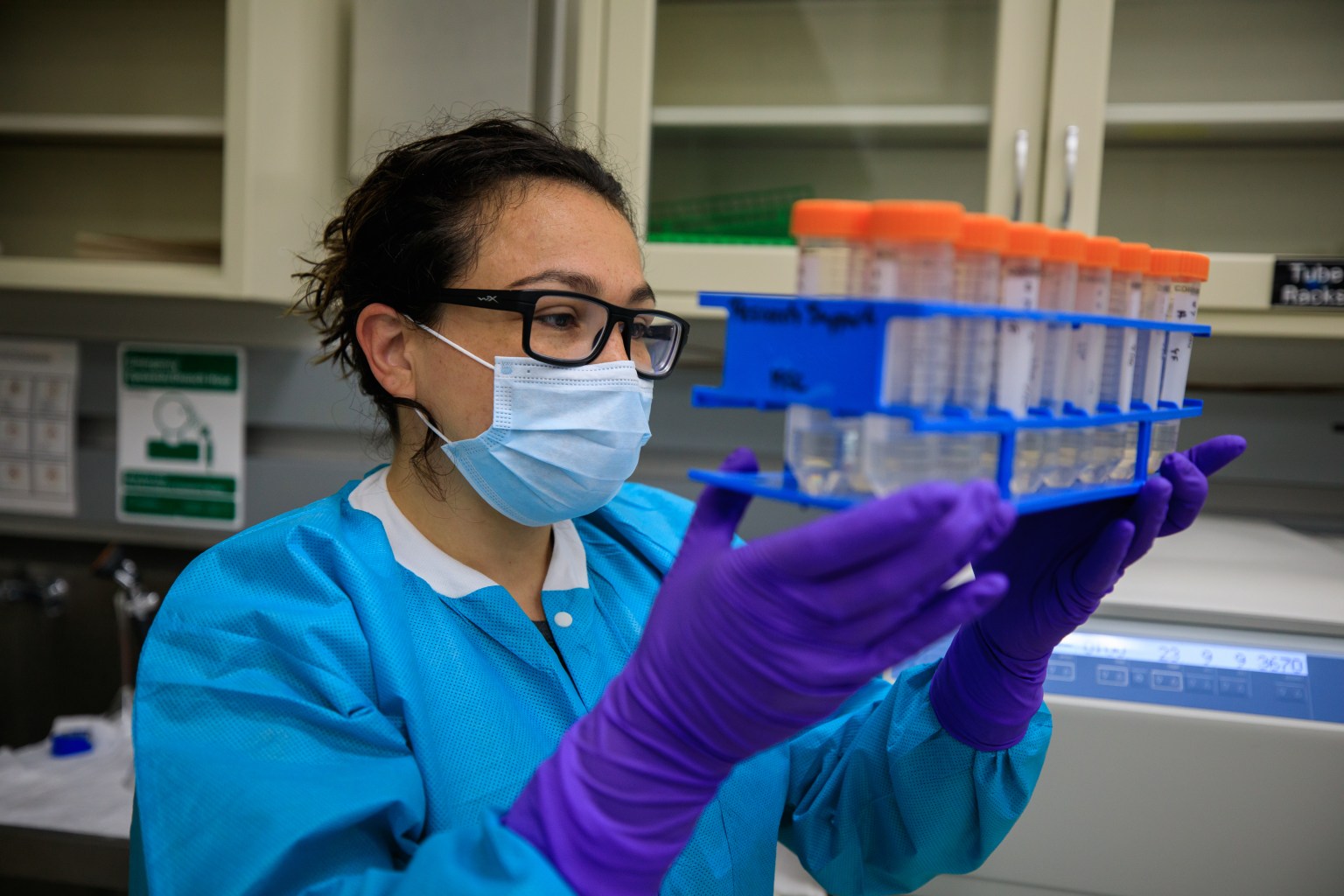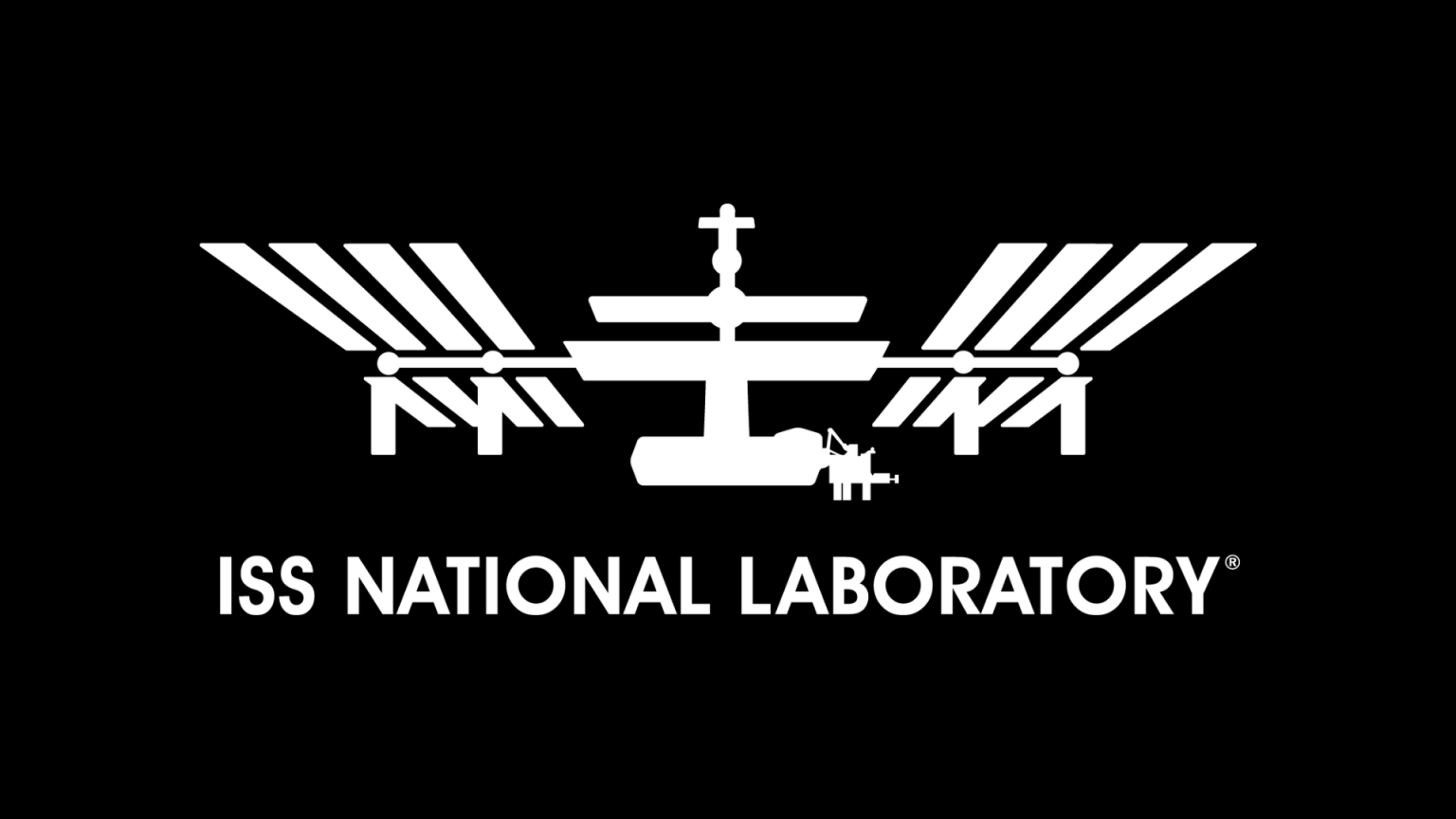Benefits for Humanity 2022 highlights diverse benefits stemming from microgravity research—for society, science, exploration, and the economy. Now in its third decade of human-tended operation and science, the space station has moved from initial research to full utilization and increasingly to results.
These citations for scientific papers referred to in the publication are for those who want to delve deeper into some of those results. The list is organized by chapter and article. Article titles link to the individual article on the web page. For those reading a hard copy or PDF of the publication, page numbers after the title indicate where to find the corresponding article.
Where article titles differ between the web pages and pdf or hard copy, links and page numbers are associated with the appropriate title.
YOUR ORBITING LABORATORY
From Outpost to Orbiting Laboratory p. 7
Investigation: PK-4
Liu B, Goree JA, Schütt S, Melzer A, Pustylnik MY, Thomas HM, et al. Nonlinear wave synchronization in a dusty plasma under microgravity on the International Space Station (ISS). IEEE Transactions on Plasma Science. 2021 December; 49(12): 3958-3962.
SEEING OUR HOME IN A WHOLE NEW LIGHT
An Unmatched Eye on Earth: Helping farmers, cities, forests, disaster response, climate science, and more from orbit p. 27
Investigation: UV Atmosphere – Mini-EUSO
Bacholle, P. Barrillon, M. Battisti, A. Belov, M. Bertaina, et al. Mini-EUSO Mission to Study Earth UV Emissions on board the ISS. The Astrophysical Journal Supplement Series. 17 March 2021; 253 36.
Investigation: ECOSTRESS
Fisher JB, Lee B, Purdy AJ, Halverson GH, Dohlen MB, et al. ECOSTRESS: NASA’s Next Generation Mission to Measure Evapotranspiration From the International Space Station. Water Resources Research. 2020 April 6; 56(4): e2019WR026058.
Li X, Xiao J, Fisher JB, Baldocchi D. ECOSTRESS estimates gross primary production with fine spatial resolution for different times of day from the International Space Station. Remote Sensing of Environment. 2021 June 1; 258112360.
Cooley SS, Fisher JB, Goldsmith G. Convergence in water use efficiency within plant functional types across contrasting climates. Nature Plants. 2022 April 14; 1-5.
Investigation: Photobioreactor
Helisch H, Belz S, Keppler J, Detrell G, Henn N, et al. Non-axenic microalgae cultivation in space – Challenges for the membrane µgPBR of the ISS experiment PBR@LSR. 48th International Conference on Environmental Systems, Albuquerque, New Mexico. 2018 July 8; ICES-2018-18616 pp.
Investigation: CEO
Wicht M, Kuffer M. The continuous built-up area extracted from ISS night-time lights to compare the amount of urban green areas across European cities. European Journal of Remote Sensing. 2019 August 9; 5258-73.
Li K, Chen Y, Li Y. The Random Forest-Based Method of Fine-Resolution Population Spatialization by Using the International Space Station Nighttime Photography and Social Sensing Data. Remote Sensing Letters. 2018 October 17; 10(10): 1650.
Kuffer M, Pfeffer K, Sliuzas R, Taubenboeck H, Baud I, van Maarseveen M. Capturing the urban divide in nighttime light images from the International Space Station. IEEE Journal of Selected Topics in Applied Earth Observations and Remote Sensing. 2018 August; 11(8): 2578-2586.
Schirmer AE, Gallemore C, Liu T, Magle S, DiNello E, et al. Mapping behaviorally relevant light pollution levels to improve urban habitat planning. Scientific Reports. 2019 August 15; 9(1): 11925.
Cote-Lussier C, Knudby A, Barnett T. A novel low-cost method for assessing intra-urban variation in night time light and applications to public health. Social Science & Medicine. 2020 January 30; 248112820.
MICROBIOLOGY IN MICROGRAVITY
Harnessing the Power of Microbes for Mining in Space p 51
Investigation: Biorock
Cockell CS, Santomartino R, Finster KW, Waajen AC, Eades LJ, et al. Space station biomining experiment demonstrates rare earth element extraction in microgravity and Mars gravity. Nature Communications. 2020 November 10; 11(1): 5523
Cockell CS, Santomartino R, Finster KW, Waajen AC, Nicholson N, et al. Microbially-Enhanced Vanadium Mining and Bioremediation Under Micro- and Mars Gravity on the International Space Station. Frontiers in Microbiology. 2021 April 1; 12641387.
ADVANCING HUMAN HEALTH
Space Station Leads to Breakthroughs in Human Health on Earth p. 57
Investigation: Ring Sheared Drop
McMackin PM, Griffin SR, Riley FP, Gulati S, Debono NE, et al. Simulated microgravity in the ring-sheared drop. npj Microgravity. 2020 January 3; 6(1): 1-7.
Gulati S, Raghunandan A, Rasheed F, McBride SA, Hirsa AH. Ring-Sheared Drop (RSD): Microgravity Module for Containerless Flow Studies. Technology. 2017 February 1; 29(1-2): 81-89.
Investigation: JAXA Amyloid
Yagi-Utsumi M, Yanaka S, Song C, Satoh T, Yamazaki C, et al. Characterization of amyloid β fibril formation under microgravity conditions. npj Microgravity. 2020 June 12; 6(1): 17.
Investigation: ESA Amyloid Aggregation
Berrone E, Cardone F, Corona C, Sbriccoli M, Favole A, et al. The Amyloid Aggregation Study on Board the International Space Station, an Update. Aerotecnica Missili & Spazio. 2020 June 1; 99(2): 141-148.
Investigation: Mighty Mice in Space
Lee S, Lehar A, Meir JU, Koch C, Morgan A, et al. Targeting myostatin/activin A protects against skeletal muscle and bone loss during spaceflight. Proceedings of the National Academy of Sciences of the United States of America. 2020 September 2; 117(38): 23942-23951.
Crystallizing Proteins in Space Helping to Identify Potential Treatments for Diseases p. 61
Investigation: JAXA PCG
Yamada M, Kihira K, Iwata M, Takahashi S, Inaka K, et al. Protein Crystallization in Space and its Contribution to Drug Development. Handbook of Space Pharmaceuticals. 2021 1-26.
Komaki H, Maegaki Y, Matsumura T, Shiraishi K, Awano H, et al. Early phase 2 trial of TAS-205 in patients with Duchenne muscular dystrophy. Ann Clin Transl Neurol 2020 Feb;7(2):181-190.
Haruki R, Kimura T, Iwasaki H, Yamada K, Kamiyama I, et al. Safety Evaluation of Hemoglobin-Albumin Cluster “HemoAct” as a Red Blood Cell Substitute. Sci Rep 2015 Jul 29;5:12778.
Komatsu T, Kihira K, Yamada K, Yokomaku K, Akiyama M, Morita Y. Physicochemical Properties and Crystal Structures of Recombinant Canine and Feline Serum Albumins. International Journal of Microgravity Science and Application. 2019 36(1): 360104.
Investigation: PCG-5
Reichert P, Prosise W, Fischmann TO, Scapin G, Narasimhan C, et al. Pembrolizumab microgravity crystallization experimentation. npj Microgravity. 2019 December 2; 5(1): 1-8.
Investigation: LMM Biophysics-2
Warzecha M, Verma L, Johnston BF, Palmer JC, Florence AJ, Vekilov P. Olanzapine crystal symmetry originates in preformed centrosymmetric solute dimers. Nature Chemistry. 2020 September 23; 12914–920.
Tissue Chips Investigate Diseases, Test Drugs on the Space Station p.65
Investigation: SPHEROIDS
Pietsch J, Gass S, Nebuloni S, Echegoyen D, Riwaldt S, et al. Three-dimensional growth of human endothelial cells in an automated cell culture experiment container during the SpaceX CRS-8 ISS space mission – The SPHEROIDS project. Biomaterials. 2017 April; 124126-156.
Investigation: MVP Cell-01
Black RM, Wang Y, Struglics A, Lorenzo P, Tillgren V, et al. Proteomic analysis reveals dexamethasone rescues matrix breakdown but not anabolic dysregulation in a cartilage injury model. Osteoarthritis and Cartilage Open, 2020
SPACE 24/7/365
Human Research: Studying Astronaut Physiology p.77
Investigation: Twins Study
Garrett-Bakelman FE, Darshi M, Green SJ, Gur RC, Lin L, et al. The NASA Twins Study: A multidimensional analysis of a year-long human spaceflight. Science 12 Apr 2019; Vol 364, Issue 6436.
Investigation: MARROW
Trudel G, Shahin N, Ramsay T, Laneuville O, Louati H. Hemolysis contributes to anemia during long-duration space flight. Nature Medicine. Vol 28, pages59–62 (2022).
Trudel G, Shafer J, Laneuville O, Ramsay T. Characterizing the effect of exposure to microgravity on anemia: more space is worse. American Journal of Hematology. 2019 December 2; 95(3): 267-273.
Shahin N, Louati H, Trudel G. Measuring Human Hemolysis Clinically and in Extreme Environments Using Endogenous Carbon Monoxide Elimination. Annals of Biomedical Engineering. 2020 May 1; 48(5): 1540-1550.
NEW FRONTIERS IN PHYSICS
Going with the Fluid Flow Aboard the International Space Station p.107
Investigation: ESA Multiscale Boiling (RUBI)
Sielaff A, Mangini D, Kabov OA, Raza MQ, Garivalis AI, et al. The multiscale boiling investigation on-board the International Space Station: An overview. Applied Thermal Engineering. 2022 January 1; epub117932.
Ronshin F, Sielaff A, Tadrist L, Stephan P, Kabov OA. Dynamics of bubble growth during boiling at microgravity. Journal of Physics: Conference Series. 2021 December; 2119(1): 012170.
Garivalis AI, Di Marco P. Isolated bubbles growing and detaching within an electric field in microgravity. Applied Thermal Engineering. 2022 July 25; 212118538
Investigation: PBRE
Motil BJ, Rame E, Salgi P, Taghavi M, Balakotaiah V. Gas–liquid flows through porous media in microgravity: The International Space Station Packed Bed Reactor Experiment. American Institute of Chemical Engineers (AIChE) Journal. 2021 January; 67(1): e17031.
Investigation: Capillary Beverage
Weislogel MM, Graf JC, Wollman AP, Turner CC, Cardin KJ, et al. How advances in low-g plumbing enable space exploration. npj Microgravity. 2022 May 20; 8(1): 1-11.
Space Station Study of Neutron Stars Helps Improve CT Scans p. 111
Investigation: NICER
Kara E, Steiner JF, Fabian AC, Cackett EM, Uttley P, et al. The corona contracts in a black-hole transient. Nature. 2019 January 9; 565(7738): 198-201.
Cramer A, Hecla J, Wu D, Lai X, Boers T, et al. Stationary Computed Tomography for Space and other Resource-constrained Environments. Scientific Reports. 2018 September 21; 8(1): 14195.
Patents:
Gendreau KC, Arzoumanian Z, Kenyon SJ, Spartana NS. Miniaturized high-speed modulated X-ray source. United States Patent and Trademark Office. 2015 August 25; 9,117,622.
Gupta R, Krull W, Hecla J, Cramer A, Kenyon SJ, Arzoumanian Z, Gendreau KC. Tomographic imaging system. United States Patent and Trademark Office. 2021 January 19; US10895540B113pp.
You’re Hot Then You’re Cold p. 117
Investigation: Flex
Dietrich DL, Nayagam V, Hicks MC, Ferkul PV, Dryer FL, et al. Droplet Combustion Experiments Aboard the International Space Station. Microgravity Science and Technology. 2014 October; 26(2): 65-76.
Nayagam V, Dietrich DL, Williams FA. Effects of properties of atmosphere diluents on cool-flame combustion of normal-alkane droplets. Combustion and Flame. 2021 July 1; 229111408.
Investigation: Confined Combustion
Li Y, Liao YT, Ferkul PV, Johnston MC, Bunnell CT. Experimental study of concurrent-flow flame spread over thin solids in confined space in microgravity. Combustion and Flame. 2021 May 1; 22739-51.
Li Y, Liao YT, Ferkul PV, Johnston MC, Bunnell CT. Confined combustion of polymeric solid materials in microgravity. Combustion and Flame. 2021 December 1; 234111637.
Sharma A, Li Y, Liao YT, Ferkul PV, Johnston MC, Bunnell CT. Effects of Confinement on Opposed-Flow Flame Spread over Thin Solids in Microgravity. 2022 Spring Technical Meeting of the Central States Section of the Combustion Institute, Detroit, Michigan. 2022 May 17; 11pp.
Investigation: ELF
Yoshida K, Kumagai H, Yamane T, Hayashi A, Koyama C, et al. Thermophysical properties of molten Ga2O3 by using the electrostatic levitation furnace in the International Space Station. Applied Physics Express. 2022 epub.
Ishikawa T, Koyama C, Oda H, Shimonishi R, Ito T, Paradis P. Densities of Liquid Tm2O3, Yb2O3, and Lu2O3 Measured by an Electrostatic Levitation Furnace Onboard the International Space Station. Metals. 2022 July; 12(7): 1126.
Investigation: Cold Atom Lab
Aveline DC, Williams JR, Elliott ER, Dutenhoffer CA, Kellogg JR, et al. Observation of Bose–Einstein condensates in an Earth-orbiting research lab. Nature. 2020 June 11; 582(7811): 193-197.
Carollo RA, Aveline DC, Rhyno B, Vishveshwara S, Lannert C, et al. Observation of ultracold atomic bubbles in orbital microgravity. Nature. 2022 May 18; epub1-6.
GROWING THE LOW-EARTH ORBIT ECONOMY
Space Station Enables Launch, Growth of Space Businesses p. 123
Investigation: Bishop Airlock
Brinkley C, Johnson MD, Howe JB. Commercial Airlock for the International Space Station. AIAA SPACE and Astronautics Forum and Exposition, Orlando FL. 2017 September 12; AIAA 2017-525412 pp.
Investigation: SOLISS
Komatsu H, Ohta S, Yamazoe H, Kubo Y, Nakao T, et al. The pointing performance of the optical communication terminal, SOLISS in the experimentation of bidirectional laser communication with an optical ground station. Free-Space Laser Communications XXXIII, Online Event. 2021 March; 1167811678F.
CubeSats Open up Space to More Countries and New Technology Applications p. 132
Investigation: ASTERIA
Knapp M, Seager S, Demory B, Krishnamurthy A, Smith MW, et al. Demonstrating High-precision Photometry with a CubeSat: ASTERIA Observations of 55 Cancri e. The Astrophysical Journal. 2020 June; 160(1): 23.
Investigation: RainCube
Sy OO, Tanelli S, Durden SL, Peral E, Sacco G, et al. Scientific Products from the First Radar in a CubeSat (RainCube): Deconvolution, Cross-Validation, and Retrievals. IEEE Transactions on Geoscience and Remote Sensing. 2021 May 5; 1-20.
Space Station Enables Tests of Technology to Capture, Refuel, Repair Orbiting Satellites
Catch a Falling Satellite: Space station enables tests of technology to capture, refuel,
and repair orbiting satellites p. 135
Investigation: RRM3
Alberts SJ, Collicott SH. Modeling for Design of a Sub-orbital Payload Supporting Cryogenic Gauging Demonstration. AIAA Propulsion and Energy 2019 Forum (Indianapolis, IN). 2019 August 19; 10 pp.
Investigation: ZBOT
Kassemi M, Kartuzova O, Hylton S. Validation of two-phase CFD models for propellant tank self-pressurization: Crossing fluid types, scales, and gravity levels. Cryogenics. 2017 October 20; epub.
Kassemi M, Hylton S, Kartuzova O. 1G and Microgravity Tank Self-pressurization: Experiments and CFD Model Validations across Ra and Bo Regimes. International Journal of Microgravity Science and Application. 2020 January 31; 37(1): 370103.
Building a Better Future in Orbit p. 137
Investigation: 3D Printing in Zero-G
Prater TJ, Werkheiser N, Ledbetter III FE, Timucin DA, Wheeler KR, Snyder MP. 3D Printing in Zero G technology demonstration mission: Complete experimental results and summary of related material modeling efforts. The International Journal of Advanced Manufacturing Technology. 2018 November 3; epub27 pp.
Prater TJ, Werkheiser N, Ledbetter III FE, Morgan K. In-Space Manufacturing at NASA Marshall Space Flight Center: A Portfolio of Fabrication and Recycling Technology Development for the International Space Station. 2018 AIAA SPACE and Astronautics Forum and Exposition, Orlando, FL. 2018 September 17-19; 14 pp.
Investigation: Portable On Board Printer 3D
Musso G, Lentini G, Enrietti L, Volpe C, Ambrosio EP, et al. Portable on Orbit Printer 3D: 1st European Additive Manufacturing Machine on International Space Station. Advances in Physical Ergonomics and Human Factors. 2016 643-655.
Investigation: Refabricator
Prater TJ, Werkheiser N, Ledbetter III FE, Morgan K. In-Space Manufacturing at NASA Marshall Space Flight Center: A Portfolio of Fabrication and Recycling Technology Development for the International Space Station. 2018 AIAA SPACE and Astronautics Forum and Exposition, Orlando, FL. 2018 September 17-19; 14 pp.
Prater TJ, Edmunsson J, Fiske M, Ledbetter III FE, Hill C, et al. NASA’s In-Space Manufacturing Project: Update on Manufacturing Technologies and Materials to Enable More Sustainable and Safer Exploration. 70th International Astronautical Congress 2019, Washington, DC. 2019 October 21-25; IAC-19.D3.2B.514 pp.































